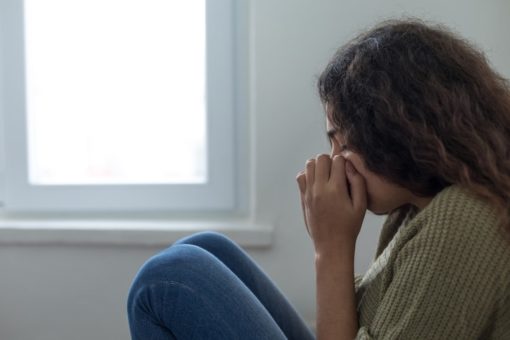Defining Panic Disorder and Define Anxiety
Studies have shown that approximately 2%-6% of adults in the United States will be diagnosed with panic disorder in their lifetime. Panic disorder is a type of anxiety disorder that is characterized by having recurring panic attacks. An individual who experiences a panic attack does not necessarily have a panic disorder. Panic attacks may occur in many other mental health disorders. To be diagnosed with panic disorder, an individual must have one of two behaviors for at least one month: A continual and marked fear of having panic attacks in the future, or a shift in behavior designed to avoid the attacks.
Signs and symptoms of a panic attack
According to the DSM, four or more of the following symptoms characterizes a panic attack:
- Heart palpitations, pounding heart, or accelerated heart rate
- Excessive sweating
- Trembling
- Shortness of breath
- Choking sensation
- Chest pain or discomfort
- Abdominal pain
- Nausea
- Dizziness or lightheadedness
- Feelings of being detached from oneself also known as out of body experience
- Feelings of losing control
- Fear of dying
- Numbness or tingling in limbs
- Chills or hot flashes
Characteristics of a panic attack
Panic attacks may appear suddenly, out of the blue, or can be triggered by underlying stressors. Some panic attacks are known as “expected” because they occur after a known trigger such as the fear of flying, closed spaces, or heights. Symptoms usually peak within ten minutes and resolve shortly after leaving many individuals feeling unusual or worried after the event. Unexpected panic attacks that occur “out of the blue” are more common in individuals who have a panic disorder. Panic attacks can be so intense that an individual may feel as though their life is in jeopardy. After the panic attack subsides, the individual may continue to feel uneasy and experience anxiety about having another attack. Some individuals will change their behaviors and lifestyles to avoid having another panic attack, which is one of the characteristics of a panic disorder.
What causes panic disorders?
Panic disorders, like many other mental health disorders, can be caused by many different factors. Panic disorders have a genetic link and, therefore, can be passed down from parent to offspring. Individuals who have an alcohol or substance use disorder are more likely to develop panic disorder. Major life stressors and transitions such as a new job or the death of a loved one can trigger the development of panic disorder. A malfunction in the brain may also cause panic disorders, and unfortunately, this may not be picked up on any radiologic scan, thereby creating “unexpected” panic attacks.
Treatment for panic disorders
Panic disorders are very treatable, and once treated, most individuals will not have any complications. Panic disorders are best treated with psychotherapy, specifically cognitive behavioral therapy, where individuals are taught to recognize the triggers that are causing the panic attacks. Individuals are taught coping skills and techniques to prevent panic attacks and to overcome the symptoms when they occur. Medications such as anti-anxiety medications and antidepressants may be given to help with symptoms of a panic attack. However, anti-anxiety medications can be very addicting and therefore are not recommended long-term. If you are experiencing signs and symptoms associated with panic disorder, it is best to reach out to a therapist who has experience treating panic disorders and anxiety. You may also have an undiagnosed co-occurring mental health or substance use disorder, or you may have underlying past trauma that has not yet been identified. Therefore, seeking treatment from a mental health professional who is trained in treating trauma and co-occurring disorders may be the best course of action.
Kristen Fuller, M.D., is a clinical content writer and enjoys writing about evidence-based topics in the cutting-edge world of mental health and addiction medicine. She is a family medicine physician and author, who also teaches and contributes to medicine board education. Her passion lies within educating the public on preventable diseases, including mental health disorders and the stigma associated with them. She is also an outdoor activist and spends most of her free time empowering other women to get outside into the backcountry.
